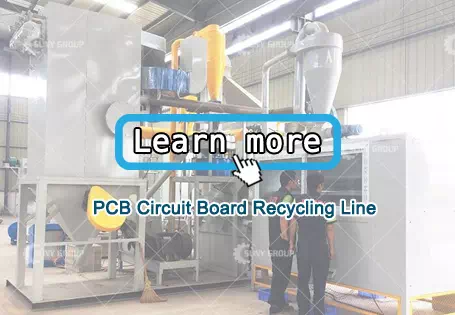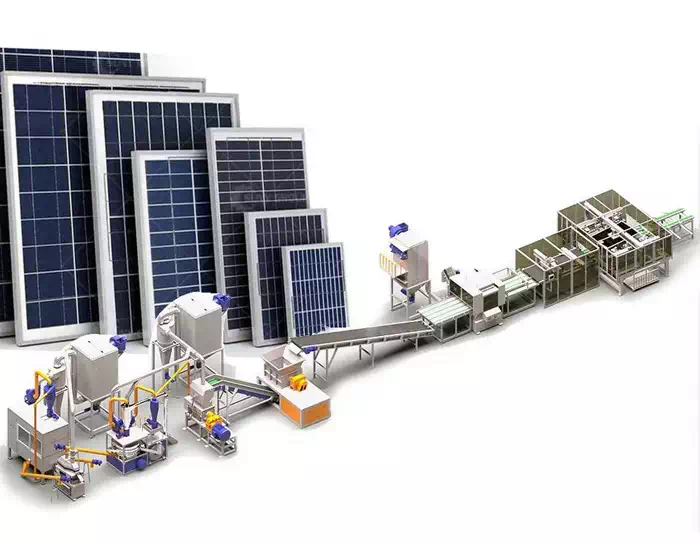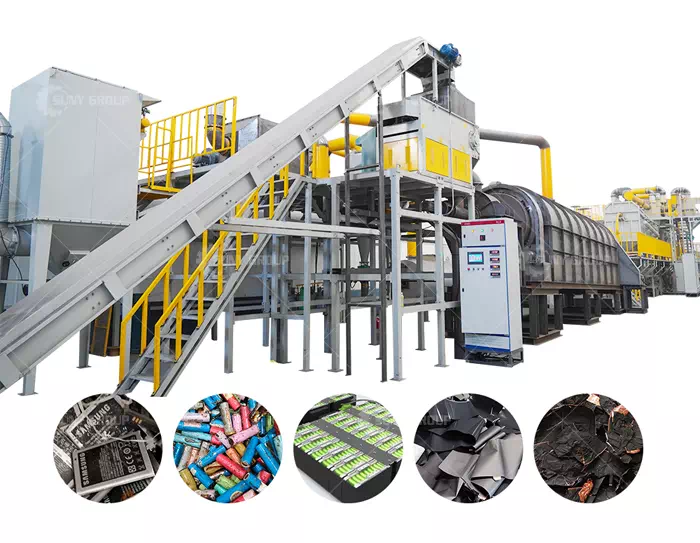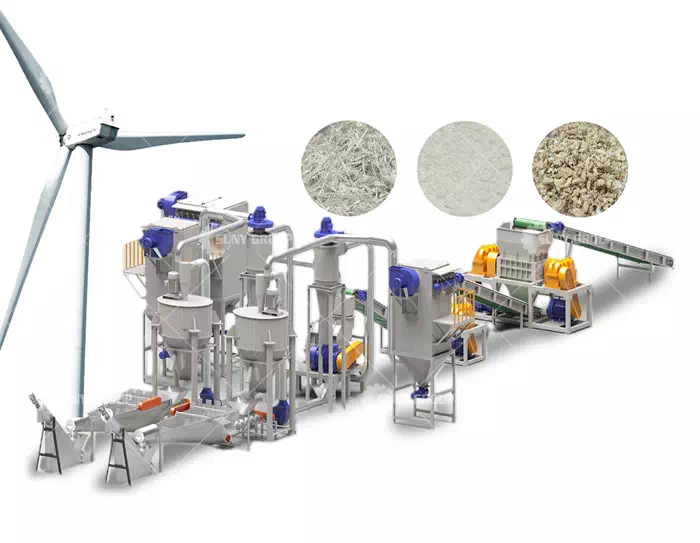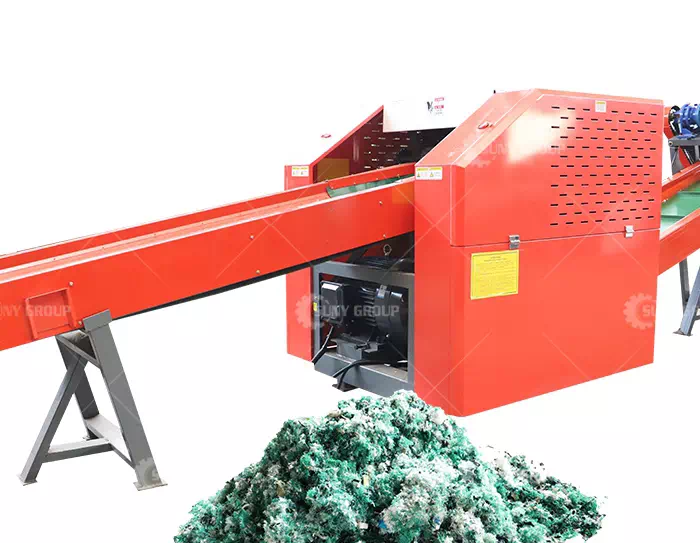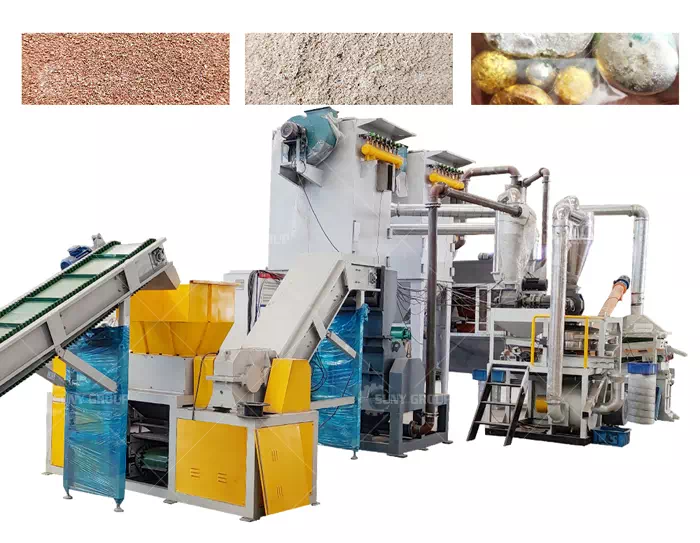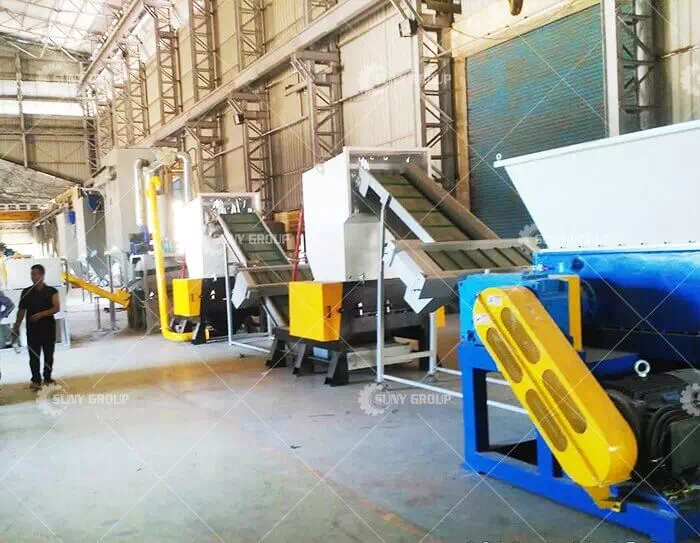Analysis of waste PCB circuit boards and recycling methods
With the industrialization and scale of PCB processing and the wide application of electronic products, more and more electronic wastes are generated and manufactured in the production and living activities of human society.
Waste PCBs contain heavy metals such as lead, mercury, and hexavalent chromium. If discarded at will, PCBs also contain toxic chemicals such as polybrominated biphenyls (PBB) and polybrominated diphenyl ethers (PBDE) as flame retardant components. It will not only pollute the environmental soil and water resources, potentially endanger human health, but also cause wasted resources that are difficult to recycle. There are nearly 20 kinds of non-ferrous metals and rare metals on the waste PCB, which has a high economic value of recycling.
Therefore, it is particularly important to properly dispose of waste PCB circuit boards.
Today we talk about several ways to deal with electronic waste:
1 Physics
According to the different physical properties of the PCB, it is recycled by physical and mechanical means.
1.1 Broken
Mechanically break the PCB, disintegrate and separate its metal and organic matter, and improve the sorting efficiency. When the crushed particles reach 0.6mm, the metal can basically achieve 100% dissociation, but the choice of crushing method and series depends on the subsequent process.
1.2 Sorting
The crushed materials, according to their differences in physical properties such as density, particle size, electrical conductivity, magnetic permeability and surface characteristics, can be processed by wind shaker technology, flotation separation technology, cyclone separation technology, floating-sink separation and eddy current separation technology. sorting.
2 Supercritical technology treatment method
This method does not change the chemical composition of the PCB material. Through pressure and temperature, the supercritical fluid is dissolved separately, and then extracted, separated and purified. Compared with traditional extraction methods, supercritical CO2 extraction is more environmentally friendly, convenient for separation, low toxicity, little or no residue, and room temperature operation.
Supercritical processing technology is not without its flaws. For example, the entrainer used in the extraction is harmful to the environment; the high-pressure and high-temperature extraction method requires high equipment and large energy consumption.
3 Chemical method
The chemical treatment technology is the extraction process that utilizes the difference in the stability of various chemical components in the PCB.
3.1 Heat treatment method
Heat treatment uses high temperatures to separate organics and metals. The heat treatment method includes vacuum cracking method, incineration method, microwave method and so on.
3.1.1 Incineration
The electronic waste is physically broken into tiny particles, and then sent to an incinerator to decompose the organic components. The residue after incineration is composed of bare metals, metal oxides and glass fibers, which are recovered by physical and chemical methods after crushing. The disadvantage of this method is that a large amount of waste gas and toxic substances are generated.
3.1.2 Pyrolysis method
Cracking method, also called dry distillation.
The waste PCB board is heated under the condition of isolating the air, and the pressure and temperature are controlled to decompose and convert the organic matter into oil and gas, which is condensed and collected for recycling. Different from the incineration method, the vacuum pyrolysis process is carried out under anaerobic conditions, which can inhibit the production of furans and dioxins and reduce environmental pollution.
3.1.3 Microwave Processing Technology
Using microwaves to heat electronic waste, when heated to about 1400 ℃, the heated glass fibers and metals are vitrified, and after cooling, gold, silver and other metals will be automatically separated in the form of beads. The remaining glass can be recycled and used as building materials. Compared with the traditional method, it has the advantages of high efficiency, rapidity, high resource recycling rate and low energy consumption.
3.2 Hydrometallurgy
Hydrometallurgical technology, placing PCBs in acids such as nitric acid, sulfuric acid and aqua regia to remove metals from electronic waste and then recycle them. It is currently the most widely used method for dealing with electronic waste. Compared with pyrometallurgy, hydrometallurgy has the advantages of less exhaust gas emission, easy disposal of residues after metal extraction, significant economic benefits, and simple process flow.
4 Biotechnology
Use the adsorption of microorganisms on the mineral surface and the oxidation of microorganisms to oxidize and recover metals. There are mainly two methods:
1. Microbial adsorption can be divided into the use of microbial metabolites to fix metal ions
Using the hydrogen sulfide produced by bacteria to fix, when the surface of the bacteria body adsorbs ions and reaches a saturated state, it can form flocs and settle down;
2. Direct immobilization of metal ions by microorganisms
Using the oxidizing property of ferric ions, other metals in precious metal alloys such as gold are oxidized into soluble substances and dissolved in the solution, so that the precious metals can be exposed and recovered.
The extraction process of biotechnology is simple, low cost and easy to operate, but the extraction time is long and the rate is low, and it has not been put into use.
E-waste has complex and diverse characteristics, and it is difficult to recover completely with a single recycling technology. The e-waste treatment technology needs to be continuously optimized to maximize resource recovery, and the treatment technology should be scientific and industrialized. In short, the treatment and recycling of waste PCBs can not only protect the environment, prevent pollution, but also facilitate the recycling of resources and promote sustainable social and economic development.
Recommend products
CONTACT US:
If you have any requirement or suggestion, please fill in the form and send to us, thanks!E-mail:sunymachine@gmail.com | Whatsapp:+8613674945231


